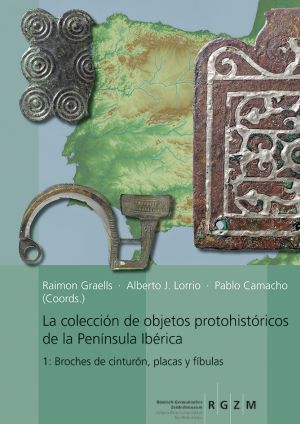Hartmann, Sonngard
Byzantinische Goldschmiedearbeiten im Römisch-Germanischen Zentralmuseum
The Römisch-Germanisches Zentralmuseum in Mainz owns a collection of Byzantine goldsmith's work, only a small part of which has been published so far and is therefore widely unknown. Since this collection of jewellery and insignia of rank contains not only individual finds but also remarkable ensembles and, in addition, some copies of valuable, unfortunately destroyed originals, it is now being made accessible to the general public for the first time. The objects are listed in 49 catalogue numbers. They come predominantly from the core areas of the Byzantine Empire, but also occasionally from regions beyond its borders and, moreover, from a long period of time stretching from the late 5th to the 14th/15th century.
Particularly noteworthy are two treasure finds, among them even a coin-dated one from Asia Minor or the Syro-Palestinian region, several necklaces made of elaborately openwork gold medallions, a gold bracelet ring from Syria also decorated with the finest opus interrasile and moreover with the most valuable precious stones, the only surviving decorative strip of a woman's crown cap, the richly chiselled pocket lid of a man of presumably royal rank, and an ensemble of Roman glass vessels, probably made in Constantinople in the 8th/9th century. They could be antiques from the imperial palace there.
In addition to a short catalogue with concise information on each object in the collection, the book contains an antiquarian appreciation of these goldsmith's works and the numismatic treatment of the coin-dated treasure find. In addition, one finds a detailed description of all applied goldsmithing techniques, which two experienced goldsmiths and restorers examined in the RGZM workshops. Overall, the catalogue is much more richly illustrated than comparable publications with new master photos of all the precious objects and countless detailed photos as well as drawings.
La colección de objetos protohistóricos de la Península Ibérica: 1: Broches de cinturón, placas y fíbulas
The collection of materials from the Iberian Peninsula held at the RGZM consists of around 200 objects, divided into two groups with particular characteristics and problems: clothing ornaments and weapons.
This first volume presents objects related to clothing and/or personal adornment that correspond to the first acquisitions of Hispanic pieces made by the RGZM at the beginning of the 20th century.
The materials are necessarily divided by categories and types, as in a traditional catalogue, but the concern for methodological changes and the renewal of explanatory paradigms in the study of Hispanic protohistory has forced the authors to take certain precautions that make this catalogue an experiment. The aim has been to compensate for the lack of contexts with an intensive study and discussion of the parallels of each piece, turning each chapter into brief monographic studies. This approach makes it possible to characterise the area of origin and chronology of each specimen in the collection. It is a demanding work that attempts to go beyond the main function of the catalogue (that of compiling pieces from the antiquities market) and enters into the arduous work of scientific and patrimonial recovery, presenting the data for discussion.
This project to study the Iberian collection of the RGZM began in Mainz in 2012 on the initiative of the institution's management, as a contribution to the comprehensive study and dissemination of its archaeological collection. The success of the publication of this first part is the result of the coordination carried out by the authors (researchers from the RGZM and the University of Alicante) and the collaboration of specialists from different Spanish institutions.
Volume 2, see here.








